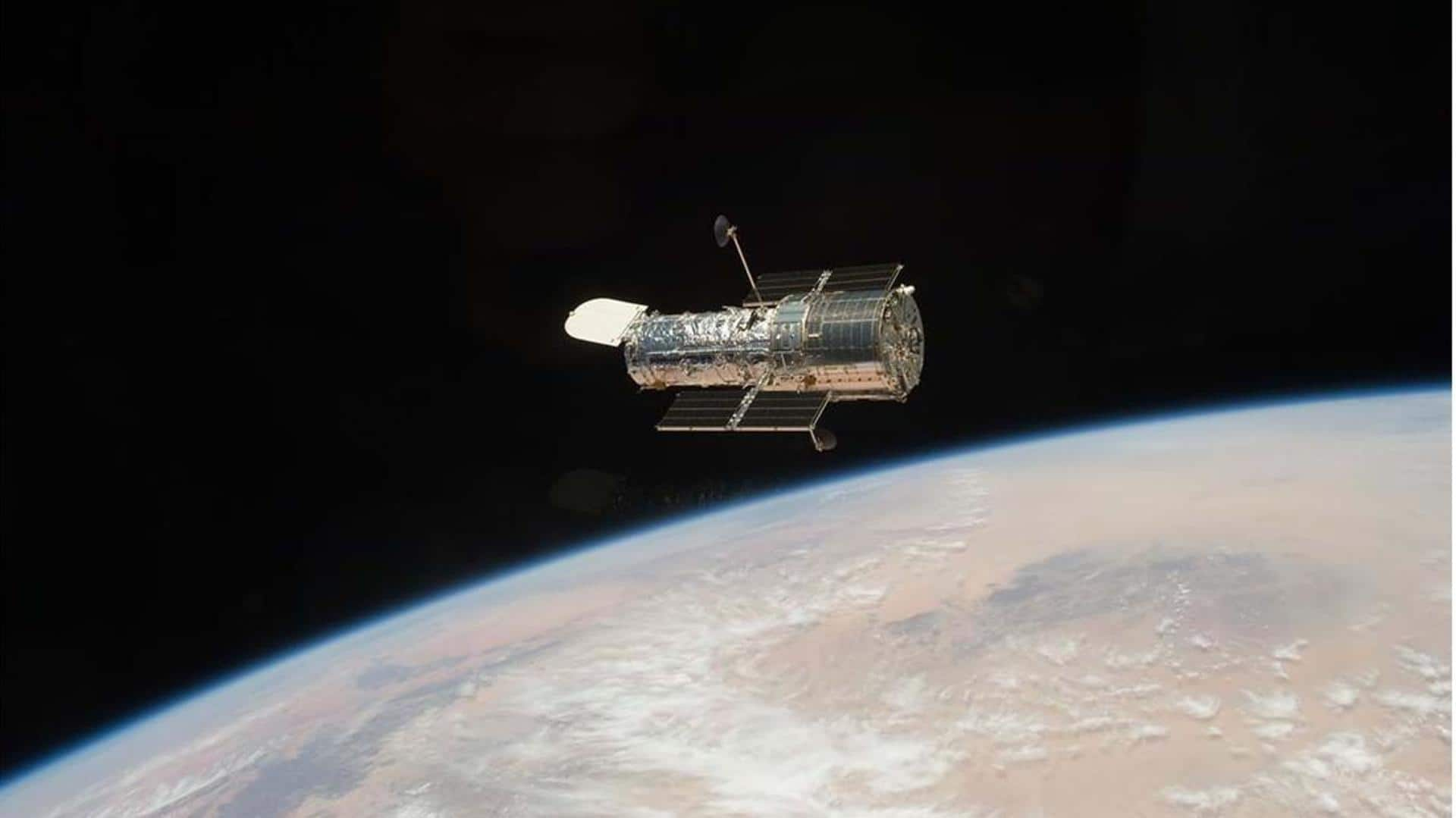
Historic first! NASA's Hubble measures mass of lone white dwarf
What's the story
With the aid of NASA's Hubble Space Telescope, astronomers for the first time, have directly measured the mass of a single, isolated white dwarf, which is essentially "the surviving core of a burned-out, Sun-like star."
It was found that the mass of the white dwarf is 56% of that of the Sun. This finding is in accordance with the theoretical predictions and current theories.
Context
Why does this story matter?
A white dwarf is what stars become once they have exhausted their nuclear fuel. They expel most of their outer material and only the hot core of the star remains. A typical white dwarf is half as massive as the Sun and slightly bigger than Earth.
The unique observation from the Hubble telescope provides insights into the structure and composition of white dwarfs.
Observation
Researchers employed"gravitational microlensing" to monitor the isolated white dwarf
To monitor the isolated white dwarf, researchers employed a trick of nature, called "gravitational microlensing."
"The light from a background star was slightly deflected by the gravitational warping of space by the foreground dwarf star," explained NASA.
"As the white dwarf passed in front of the background star, microlensing caused the star to appear temporarily offset from its actual position in the sky."
Research
The white dwarf LAWD 37 lies only 15 light-years away
The white dwarf in question is LAWD 37 and is believed to be a remnant of a star that burned out one billion years ago. It lies only 15 light-years away, in the constellation Musca.
Using Hubble, scientists measured how light from a distant star bent around LAWD 37, causing the background star to temporarily change its apparent position in the sky.
Previous observations
Mass measurements can be tricky because of the orbital period
Up until now, previous mass measurements have been carried out on white dwarfs in binary star systems, by observing the motion of two co-orbiting stars.
However, these measurements can be uncertain if the white dwarf's companion star is in a long-period orbit of hundreds or thousands of years.
Furthermore, telescopes can only cover a small portion of the dwarf's orbital motion.
Historic first!
The latest observation sets a new benchmark
Microlensing was first used in 2017, by Kailash Sahu from the Space Telescope Science Institute in Maryland,
He used the technique to measure the mass of another white dwarf, called Stein 2051 B.
"Our latest observation provides a new benchmark because LAWD 37 is all by itself," said Sahu, who is also the principal Hubble investigator on this latest observation.
Information
LAWD 37 was selected based on observations from Gaia observatory
LAWD 37 was selected based on observations from ESA's Gaia space observatory, which conducts surveys of nearly two billion star positions. Astronomers were then able to predict that LAWD 37 would briefly pass in front of a background star in November 2019.
Preparations
Hubble carried out precise measurements for several years
Hubble then measured, over several years, how the background star's apparent position in the sky was temporarily deflected by the crossing of LAWD 37.
"These events are rare, and the effects are tiny," said Peter McGill, the study's lead author. "For instance, the size of our measured offset is like measuring the length of a car on the Moon as seen from Earth."
Hubble
Hubble can make high-contrast observations in visible light
However, not everthing went smoothly. The light from the background star was faint.
The main hurdle for astronomers was to obtain an image away from the glare of the white dwarf, which is 400 times brighter than the background star.
But they were able to do it thanks to Hubble because only it can make these kinds of high-contrast observations in visible light.
Official words
'Gaia has been a game-changer in predicting events'
Researchers hope to predict such future events with Gaia data.
"Gaia has really changed the game - it's exciting to be able to use Gaia data to predict when events will happen, and then observe them happening," said McGill.
"We want to continue measuring the gravitational microlensing effect and obtain mass measurements for many more types of stars."